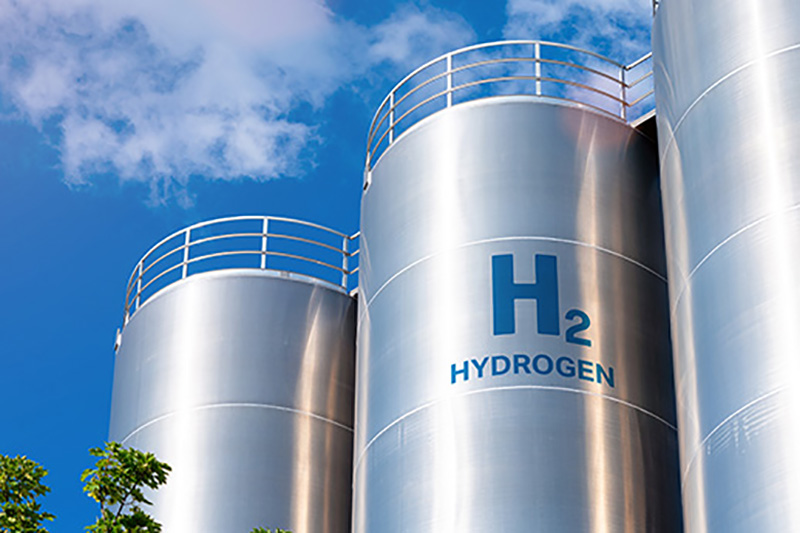Hydrogen production from urea
A material to remove urea from water for hydrogen gas has been developed at Worcester Polytechnic Institute, USA.

Researcher Xiaowei Teng, and her students Tongxin Zhou and Sathya Narayanan Jagadeesan, claim that by building materials of nickel and cobalt atoms with carefully tailored electronic structures, they can enable the transition metal oxides and hydroxides to selectively oxidise urea in an electrochemical reaction.
To develop the process, they first synthesised a homogeneous mixture of nickel and cobalt oxide and hydroxide heterostructures with dominant Ni²+ and Co³+ species to facilitate the urea oxidation reaction (the reaction occurs in the anode).
'This electronic configuration is a pivotal factor to improve the selectivity of urea oxidation because we observe that higher nickel valence, such as Ni³+, indeed helps produce a fast reaction with strong electric current output, however, a large portion of current was from unwanted water oxidation,' Teng said.
Teng’s group collaborated with Aaron Deskins, a Professor of Chemical Engineering at Worcester Polytechnic Institute. Deskins performed the computational simulations and found that homogenous mixing of nickel and cobalt oxides and hydroxides benefited the electron redistribution from Ni²+ to Co³+ species and shifted valence electrons to higher energy, so that the Ni/Co catalysts are better prepared to participate in bonding with urea and water molecules.
The researchers say, 'The synergistic interaction of the Ni/Co electrocatalyst decreased the energy barrier to oxidise urea by lowering the onset potential and overcoming water oxidation. At the cathode, the hydrogen evolution reaction happens generating hydrogen from the water.'
Urea has distinct properties that make it suited to be a hydrogen storage medium, the team says.
'Urea has a molecular formula CO(NH₂)₂, which has a 6.7% weight percentage of hydrogen. Compared with other potential hydrogen-carrying chemicals, such as NH₃ (17.6% weight percentage of hydrogen), urea is a non-flammable, relatively non-toxic, stable solid that can be easily and safely transported and stored.
'Besides, urea is abundant and can be acquired from human and animal urine or industrial synthesis (by reacting CO₂ with NH₃).'
Nickel and cobalt are non-noble metals and together reportedly show much higher activity and lower overpotential on the urea oxidation reaction. The WPI group says, 'The synergistic interaction between nickel and cobalt components makes this catalyst highly active, even outperforming commercial noble metals such as palladium.'
In turn, 'the theoretical electric potential required for urea electrolysis is 0.37V, while water electrolysis requires 1.23V. Lower electric potential suggests less electric energy is required to break urea molecules for hydrogen production'.
The team does not have industrial partners at present but are 'eager to collaborate'. They want to construct a prototype urea electrolysis device to validate the feasibility of converting urea into hydrogen gas using model chemicals (e.g. commercially available urea). The goal being to repurpose toxic waste chemicals (e.g. urea from urine) to produce hydrogen gas.
The researchers recognise that as the major nitrogen fertiliser and feed additive, urea is commercially produced globally with ~180Mt manufactured in 2021. They also note an adult produces 1.5L of urine daily, equivalent to 11kg of urea and 0.77kg of hydrogen gas yearly.
'The idea is really built on our research group’s expertise in electro-oxidation of small organic molecules (e.g. methanol, ethanol) over the past 15 years.'
This also combats the issue of urea-rich agricultural run-off and municipal wastewater discharge causing eutrophication, with harmful algal blooms and hypoxic dead zones adversely impacting the aquatic environment and human health.
So potentially they believe using urea from waste streams could facilitate the energy-efficient production of hydrogen fuel, as well as sequestering urea from water to maintain the long-term sustainability of ecological systems.







